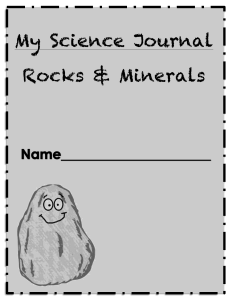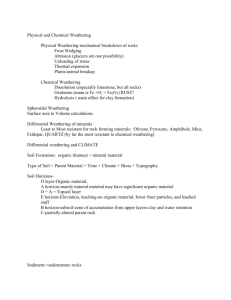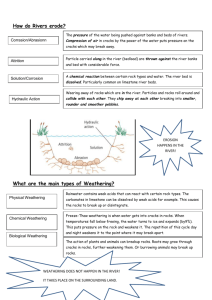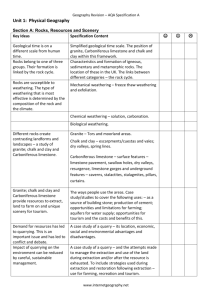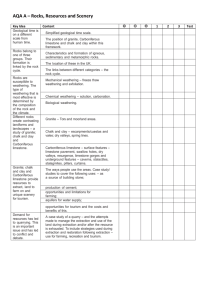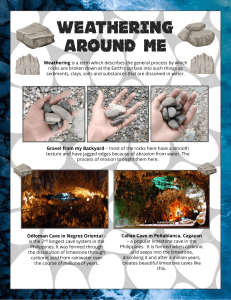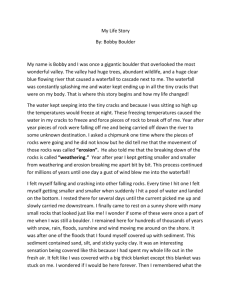SECTION 4: WEATHERING CHANGES ROCKS INTRODUCTION
advertisement
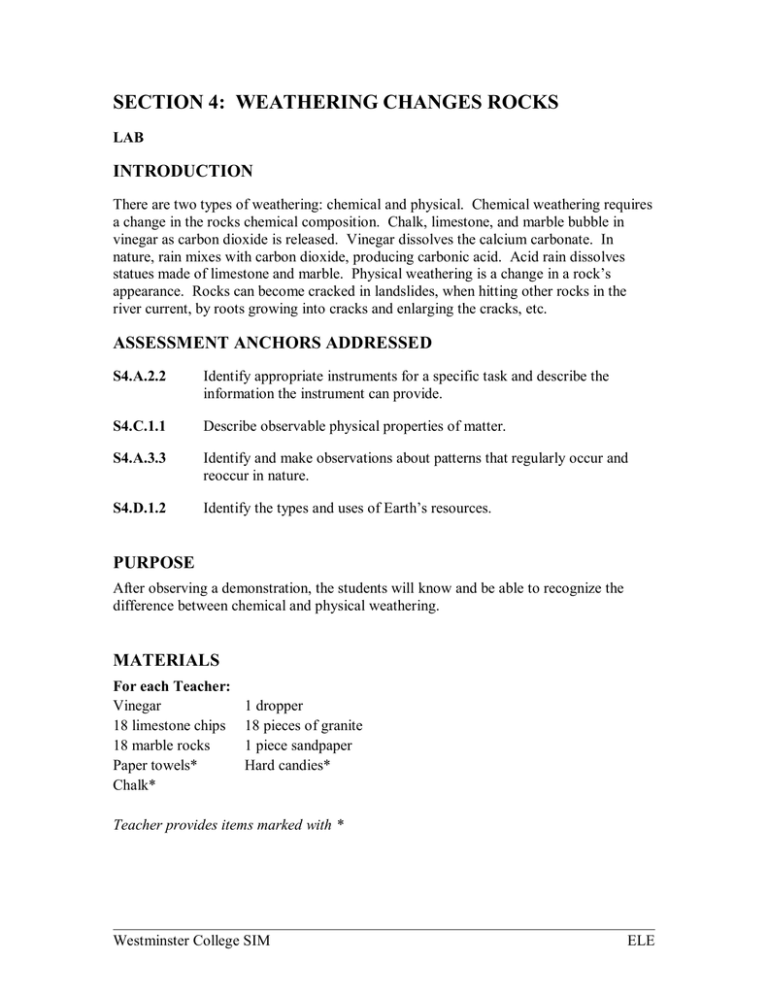
SECTION 4: WEATHERING CHANGES ROCKS LAB INTRODUCTION There are two types of weathering: chemical and physical. Chemical weathering requires a change in the rocks chemical composition. Chalk, limestone, and marble bubble in vinegar as carbon dioxide is released. Vinegar dissolves the calcium carbonate. In nature, rain mixes with carbon dioxide, producing carbonic acid. Acid rain dissolves statues made of limestone and marble. Physical weathering is a change in a rock’s appearance. Rocks can become cracked in landslides, when hitting other rocks in the river current, by roots growing into cracks and enlarging the cracks, etc. ASSESSMENT ANCHORS ADDRESSED S4.A.2.2 Identify appropriate instruments for a specific task and describe the information the instrument can provide. S4.C.1.1 Describe observable physical properties of matter. S4.A.3.3 Identify and make observations about patterns that regularly occur and reoccur in nature. S4.D.1.2 Identify the types and uses of Earth’s resources. PURPOSE After observing a demonstration, the students will know and be able to recognize the difference between chemical and physical weathering. MATERIALS For each Teacher: Vinegar 18 limestone chips 18 marble rocks Paper towels* Chalk* 1 dropper 18 pieces of granite 1 piece sandpaper Hard candies* Teacher provides items marked with * Westminster College SIM ELE

